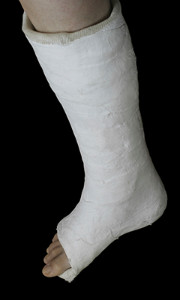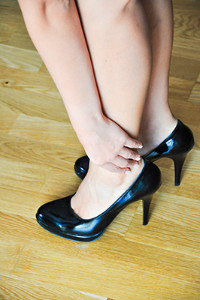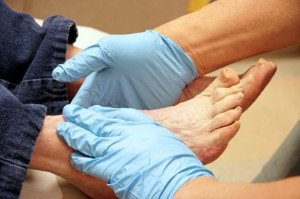Connect With Us
Blog
Items filtered by date: April 2017
Jets sign cornerback John Ojo
 The New York Jets recently announced that they have signed cornerback John Ojo, a free agent who previously played for Edmonton in the Canadian Football League. Ojo had spent the past three seasons playing for Edmonton. Due to a torn Achilles tendon, however, Ojo did not play last year. Ojo is 6-foot-3, 205 pounds, and has attracted interest from at least eight NFL teams. He suffered his Achilles tendon tear in June of last year, and is well on his way to full recovery now.
The New York Jets recently announced that they have signed cornerback John Ojo, a free agent who previously played for Edmonton in the Canadian Football League. Ojo had spent the past three seasons playing for Edmonton. Due to a torn Achilles tendon, however, Ojo did not play last year. Ojo is 6-foot-3, 205 pounds, and has attracted interest from at least eight NFL teams. He suffered his Achilles tendon tear in June of last year, and is well on his way to full recovery now.
Achilles tendon injuries need immediate attention to avoid future complications. If you have any concerns, contact Imaze Marian Davis, DPM of Marian Davis, DPM, PA. Our doctors can provide the care you need to keep you pain-free and on your feet.
What Is the Achilles Tendon?
The Achilles tendon is a tendon that connects the lower leg muscles and calf to the heel of the foot. It is the strongest tendon in the human body and is essential for making movement possible. Because this tendon is such an integral part of the body, any injuries to it can create immense difficulties and should immediately be presented to a doctor.
What Are the Symptoms of an Achilles Tendon Injury?
There are various types of injuries that can affect the Achilles tendon. The two most common injuries are Achilles tendinitis and ruptures of the tendon.
Achilles Tendinitis Symptoms
- Inflammation
- Dull to severe pain
- Increased blood flow to the tendon
- Thickening of the tendon
Rupture Symptoms
- Extreme pain and swelling in the foot
- Total immobility
Treatment and Prevention
Achilles tendon injuries are diagnosed by a thorough physical evaluation, which can include an MRI. Treatment involves rest, physical therapy, and in some cases, surgery. However, various preventative measures can be taken to avoid these injuries, such as:
- Thorough stretching of the tendon before and after exercise
- Strengthening exercises like calf raises, squats, leg curls, leg extensions, leg raises, lunges, and leg presses
If you have any questions please feel free to contact our office located in Miami, FL . We offer the newest diagnostic tools and technology to treat your foot and ankle needs.
Recovering from a Broken Ankle
 Recovery from a broken ankle depends on the type of break, its location, complexity, and its specific treatment. Depending on the case, rest and protection may be all you need. In severe cases, surgery and prolonged rehabilitation could be required. Common symptoms people experience after breaking an ankle include pain, tenderness, swelling and bruising. Many of these symptoms can be managed by following PRICE: protection, rest, ice, compression and elevation. Some over-the-counter medication can help ease lighter pain. The severity of the break will also determine how soon your podiatrist will allow your feet to bear weight and how soon he or she will encourage you to gradually resume activity.
Recovery from a broken ankle depends on the type of break, its location, complexity, and its specific treatment. Depending on the case, rest and protection may be all you need. In severe cases, surgery and prolonged rehabilitation could be required. Common symptoms people experience after breaking an ankle include pain, tenderness, swelling and bruising. Many of these symptoms can be managed by following PRICE: protection, rest, ice, compression and elevation. Some over-the-counter medication can help ease lighter pain. The severity of the break will also determine how soon your podiatrist will allow your feet to bear weight and how soon he or she will encourage you to gradually resume activity.
Broken ankles need immediate treatment. If you are seeking treatment, contact Imaze Marian Davis, DPM from Marian Davis, DPM, PA. Our doctors can provide the care you need to keep you pain-free and on your feet.
Broken Ankles
A broken ankle is experienced when a person fractures their tibia or fibula in the lower leg and ankle area. Both of these bones are attached at the bottom of the leg and combine to form what we know to be our ankle.
When a physician is referring to a break of the ankle, he or she is usually referring to a break in the area where the tibia and fibula are joined to create our ankle joint. Ankles are more prone to fractures because the ankle is an area that suffers a lot of pressure and stress. There are some obvious signs when a person experiences a fractured ankle, and the following symptoms may be present.
Symptoms of a Fractured Ankle
- Excessive pain when the area is touched or when any pressure is placed on the ankle
- Swelling around the area
- Bruising of the area
- Area appears to be deformed
If you suspect an ankle fracture, it is recommended to seek treatment as soon as possible. The sooner you have your podiatrist diagnose the fracture, the quicker you’ll be on the way towards recovery.
If you have any questions, please feel free to contact our office located in Miami, FL . We offer the newest diagnostic and treatment technologies for all your foot care needs.
High Heels Can Create Anxiety
 New findings published by scientists in Brazil have concluded that wearing improper-fitting high heels can potentially cause the wearer to suffer anxiety. By wearing ill-fitting shoes, conditions such as bunions and ingrown toenails become more prevalent. In turn, this can lead to frequent falls and an anxious disposition. Researchers previously found that 83 percent of people don’t wear the correct shoe size. To prevent the development of foot conditions, be sure to wear proper footwear that is comfortable and well-fitting.
New findings published by scientists in Brazil have concluded that wearing improper-fitting high heels can potentially cause the wearer to suffer anxiety. By wearing ill-fitting shoes, conditions such as bunions and ingrown toenails become more prevalent. In turn, this can lead to frequent falls and an anxious disposition. Researchers previously found that 83 percent of people don’t wear the correct shoe size. To prevent the development of foot conditions, be sure to wear proper footwear that is comfortable and well-fitting.
High heels have a history of causing foot and ankle problems. If you have any concerns about your feet or ankles, contact Imaze Marian Davis, DPM from Marian Davis, DPM, PA. Our doctors can provide the care you need to keep you pain-free and on your feet.
Effects of High Heels on the Feet
High heels are popular shoes among women because of their many styles and societal appeal. Despite this, high heels can still cause many health problems if worn too frequently.
Which Parts of My Body Will Be Affected by High Heels?
- Ankle Joints
- Achilles Tendon – May shorten and stiffen with prolonged wear
- Balls of the Feet
- Knees – Heels cause the knees to bend constantly, creating stress on them
- Back – They decrease the spine’s ability to absorb shock, which may lead to back pain. The vertebrae of the lower back may compress.
What Kinds of Foot Problems Can Develop from Wearing High Heels?
- Corns
- Calluses
- Hammertoe
- Bunions
- Morton’s Neuroma
- Plantar Fasciitis
How Can I Still Wear High Heels and Maintain Foot Health?
If you want to wear high heeled shoes, make sure that you are not wearing them every day, as this will help prevent long term physical problems. Try wearing thicker heels as opposed to stilettos to distribute weight more evenly across the feet. Always make sure you are wearing the proper shoes for the right occasion, such as sneakers for exercising. If you walk to work, try carrying your heels with you and changing into them once you arrive at work. Adding inserts to your heels can help cushion your feet and absorb shock. Full foot inserts or metatarsal pads are available.
If you have any questions please feel free to contact our office located in Miami, FL . We offer the newest diagnostic and treatment technologies for all your foot and ankle needs.
Preventing diabetic lesions
 For people who live with diabetes, footcare should be high on the list of concerns related to overall health. Due to constricted blood flow or nerve damage, diabetics need to take extra care to avoid potential foot and leg injuries. Walking barefoot is not typically a good idea, as you may not feel it when you step on something sharp. Proper inspection is also very important. Be sure to check your legs and feet for any kind of sores or lesions. Gone unnoticed or untreated, these wounds can quickly become infected and lead to very serious consequences like amputation. Along with daily personal inspection, make sure you have your feet checked often by a podiatrist.
For people who live with diabetes, footcare should be high on the list of concerns related to overall health. Due to constricted blood flow or nerve damage, diabetics need to take extra care to avoid potential foot and leg injuries. Walking barefoot is not typically a good idea, as you may not feel it when you step on something sharp. Proper inspection is also very important. Be sure to check your legs and feet for any kind of sores or lesions. Gone unnoticed or untreated, these wounds can quickly become infected and lead to very serious consequences like amputation. Along with daily personal inspection, make sure you have your feet checked often by a podiatrist.
Diabetic foot care is important in preventing foot ailments such as ulcers. If you are suffering from diabetes or have any other concerns about your feet, contact Imaze Marian Davis, DPM from Marian Davis, DPM, PA. Our doctors can provide the care you need to keep you pain-free and on your feet.
Diabetic Foot Care
Diabetes affects millions of people every year. The condition can damage blood vessels in many parts of the body, especially the feet. Because of this, taking care of your feet is essential if you have diabetes, and having a podiatrist help monitor your foot health is highly recommended.
The Importance of Caring for Your Feet
- Routinely inspect your feet for bruises or sores.
- Wear socks that fit your feet comfortably.
- Wear comfortable shoes that provide adequate support.
Patients with diabetes should have their doctor monitor their blood levels, as blood sugar levels play such a huge role in diabetic care. Monitoring these levels on a regular basis is highly advised.
It is always best to inform your healthcare professional of any concerns you may have regarding your feet, especially for diabetic patients. Early treatment and routine foot examinations are keys to maintaining proper health, especially because severe complications can arise if proper treatment is not applied.
If you have any questions please feel free to contact our office located in Miami, FL . We offer the newest diagnostic and treatment technologies for all your foot and ankle needs.


